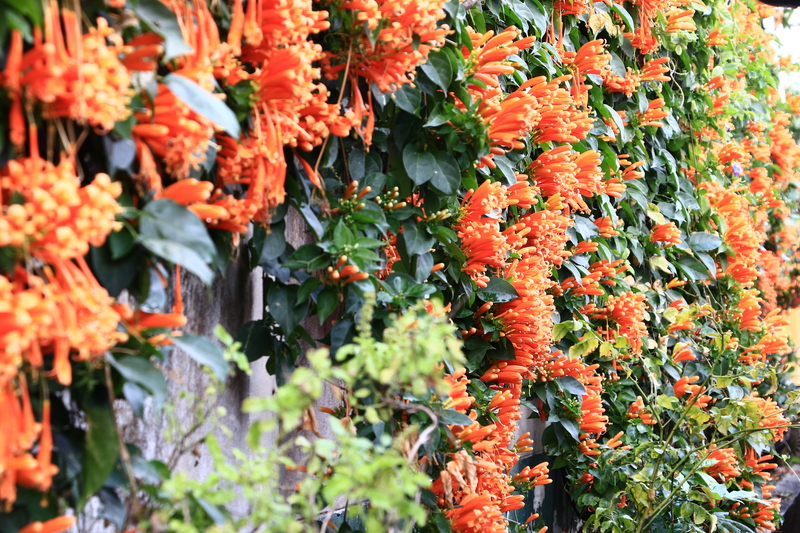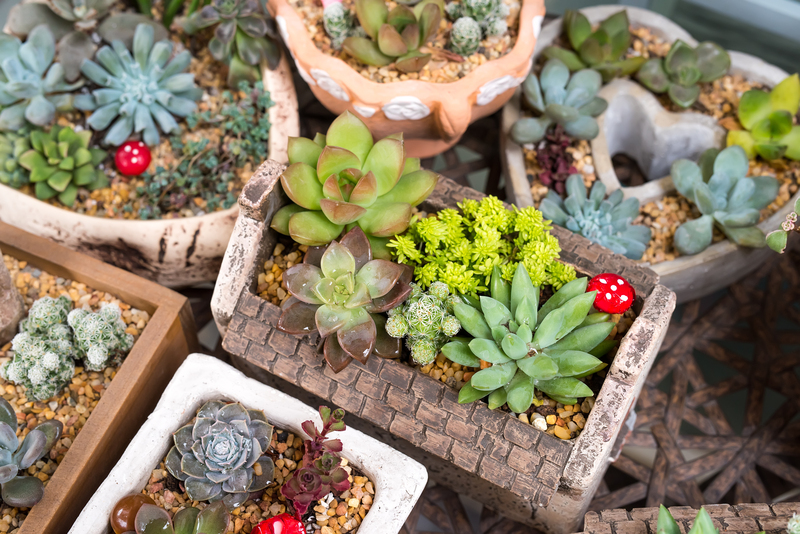Step into the world of herbs with a personalized garden sanctuary
Posted on 10/06/2025
Step into the World of Herbs with a Personalized Garden Sanctuary
Imagine having fresh basil at your fingertips for Italian dishes or snipping mint leaves straight from your backyard for afternoon tea. The journey to cultivating your own herbal garden sanctuary is both rewarding and therapeutic--a fragrant world filled with color, flavor, and wellness. This comprehensive guide will walk you through every step of creating a personalized herb oasis, ensuring your gardening experience is as enriching as it is productive.
Why Create Your Own Herbal Garden Sanctuary?
- Convenience: Fresh herbs available at any time.
- Health Benefits: Access to chemical-free, vitamin-rich greens.
- Cost-Effectiveness: Save money by growing rather than buying.
- Personal Wellbeing: Gardening relieves stress and connects you with nature.
- Eco-Friendly: Promotes a sustainable lifestyle and supports local pollinators.
Herb gardening brings opportunities to learn, experiment, and indulge in aromatic tranquility. Let's step into the world of herbs and discover how you can personalize your gardening journey to fit any space, taste, or experience level.

Choosing the Best Location for Your Herb Sanctuary
Indoors vs. Outdoors
Deciding between an indoor herb garden and an outdoor herb garden depends on your available space, climate, and preferences:
- Indoor Herb Gardens: Perfect for apartments; utilize windowsills or vertical garden kits.
- Outdoor Herb Gardens: Enjoy full sun and the natural environment--ideal for spacious yards or patios.
Understanding Sunlight Requirements
Most culinary herbs require at least 6 hours of sunlight per day. South-facing windows are ideal indoors, while raised beds or containers can maximize sun exposure outdoors. Remember, too little light results in leggy, weak plants; too much sun, especially in hot climates, can scorch delicate leaves.
Designing Your Personalized Herb Oasis
Picking Your Herbs
The beauty of a personalized herb garden sanctuary is crafting a collection tailored exactly to your culinary and wellness needs. Consider these popular and easy-to-grow options:
- Basil: Essential for Mediterranean cuisine.
- Mint: Refreshing, fast-spreading, perfect for teas.
- Parsley: Versatile garnish and health booster.
- Rosemary: Robust, aromatic, and drought-tolerant.
- Thyme: Pairs well with meats and roasts.
- Cilantro: Adds zest to Mexican and Asian dishes.
- Sage: For savory breads and holiday recipes.
- Lavender: Fragrant, calming, and beautiful in borders.
- Chives: Mild onion flavor for salads and dips.
- Lemon Balm: Citrus-scented, wonderful in desserts and teas.
Herb Garden Styles and Layouts
Reflect your personal style with a garden design that delights your senses and uplifts your mood. Here are some popular ideas:
- Container Herb Gardens: Great for patios or balconies; mobile and easy to maintain.
- Spiral Herb Gardens: Efficient use of vertical and horizontal space.
- Raised Beds: Allows total customization and excellent drainage.
- Window Boxes: Perfect for small spaces; keeps herbs within arm's reach for cooking.
- Indoor Tiered Stands: Save space while displaying a lush variety.
Companion Planting for a Thriving Herb Sanctuary
Companion planting involves growing herbs together that benefit each other through natural chemical or physical support. For example, basil and tomatoes are an iconic pairing both in the kitchen and the garden--basil repels pests that target tomatoes. Mixing complementary herbs encourages healthy growth and reduces the need for chemical pesticides.
Getting Started: Preparing Soil and Supplies
Soil Preparation
- Drainage: Herbs hate "wet feet." Use well-draining potting mix or amend garden beds with sand and compost.
- Nutrients: Enrich the soil with organic matter--compost or worm castings ensure strong growth.
- pH Level: Most herbs prefer a slightly alkaline to neutral pH (6.0-7.5). Test and adjust your soil as needed with garden lime or sulfur.
Containers and Tools
Choose pots with drainage holes, or recycled containers for a sustainable touch--think wooden crates, ceramic bowls, or even old teapots. Stock up on basics:
- Hand trowel
- Gardening gloves
- Pruning shears
- Labels and waterproof pen (to identify herbs)
- Spray bottle for gentle watering
Planting and Caring for Herbs in Your Sanctuary
Planting from Seeds vs. Starter Plants
Seeds offer variety and affordability. Start them indoors 6-8 weeks before the last frost, keeping soil moist and warm. Starter plants (transplants) provide instant gratification and are ideal for beginners. Gently loosen roots before planting, and water thoroughly.
Watering Guidelines
Most herbs prefer to dry out slightly between waterings. Overwatering causes root rot--a common mistake. Check soil by inserting your finger about 2 inches deep; if it feels dry, it's time to water. Early morning is the best time to hydrate your herbarium oasis.
Fertilizing for Robust Growth
- Use organic liquid fertilizers or diluted compost tea every 4-6 weeks.
- Avoid over-fertilizing, which causes lush leaves but weak flavors.
Pruning and Harvesting Techniques
Harvest often to encourage bushy growth. Pinch back growing tips, and always use sharp, clean scissors. Never take more than a third of the plant at once, as this can shock young herbs. Regular pruning prevents flowering, keeping leaves tender and flavorful.
Personalization: Make Your Herb Garden Sanctuary Your Own
Creative Elements for Your Garden Sanctuary
- Decorative Paths: Pebble walkways for a tranquil stroll.
- Engraved Markers: Add charm and help identify herbs.
- Garden Sculptures: Small gnomes or animal figurines to express personality.
- Solar-Powered Fairy Lights: For a magical evening ambiance.
- Aromatic Additions: Place seating near lavender or rosemary patches for relaxation.
- DIY Planters: Reuse colorful tin cans or glass jars.
Enhance your personalized herbal retreat with elements reflecting your lifestyle--whether it's a Zen-inspired corner, a kitchen window box for chefs, or a wild, cottage-style garden bursting with native pollinators.
Integrating Wellness Features
Adding an herb garden to your self-care routine can be transformative. Designate a meditation space with a bench amidst fragrant herbs such as lemon balm and lavender. Use soothing wind chimes or a small water feature to foster tranquility. Grow calming herbs for home remedies--chamomile helps with sleep, while peppermint aids digestion.
Year-Round Enjoyment of Your Herb Sanctuary
Overwintering and Indoor Growing
Don't let winter pause your herbal adventure. Bring tender herbs such as basil indoors before fall frosts. Supplement low sunlight with grow lights--compact LED systems work wonders on dark winter days. Hardy herbs like rosemary or thyme can overwinter in the ground with mulch for insulation.
Creative Uses for Home-Grown Herbs
- Culinary Delights: Infuse oils, make pesto, dry blends for seasoning, or garnish desserts.
- DIY Herbal Teas: Combine fresh mint, lemon balm, and chamomile for custom infusions.
- Herbal Remedies: Use calendula for skin salves or sage for sore throat gargles.
- Aromatherapy: Bundle herbs like lavender and rosemary for calming sachets or bath soaks.
Your personal herb garden sanctuary becomes a multi-sensory hub, enlivening your kitchen, medicine cabinet, and relaxation routines all year long.
Troubleshooting: Common Issues in Your Herb Garden Sanctuary
Pest Management
- Aphids and Spider Mites: Spray with diluted soap or introduce ladybugs.
- Fungal Diseases: Improve air circulation, avoid overhead watering, and remove affected leaves promptly.
- Slugs and Snails: Hand-pick or use copper tape barriers.
Yellowing Leaves and Stunted Growth
This may indicate overwatering, poor drainage, or nutritional deficiencies. Ensure pots have ample drainage, soil is not compacted, and supplement with organic fertilizer as needed. Monitor light exposure and adjust plant positioning if necessary.
Leggy Herbs
When herbs stretch with sparse leaves, they're typically seeking more sunlight. Relocate to a brighter area or install grow lights for optimal growth.

Expanding Your Herbal Haven
Sharing the Harvest
Give back to your community or friends by sharing fresh herbs, seeds, or homemade products like herbal oils and teas. Host workshops or garden tours to spread awareness about the joys and benefits of herb gardening.
Exploring Rare and Medicinal Herbs
For those who catch the gardening bug, consider growing less common and beneficial herbs such as:
- Stevia: Natural sweetener for beverages.
- Echinacea: Supports immune health.
- Holy Basil (Tulsi): Used in Ayurvedic wellness practices.
- Lemongrass: Aromatic and excellent for teas.
Every new harvest is an opportunity to learn and connect with herbal traditions from around the world.
Conclusion: Embrace the World of Herbs with a Personalized Sanctuary
Stepping into the world of herbs through your very own personalized garden sanctuary is more than simply planting and harvesting--it's an invitation to wellness, creativity, and sustainability. Whether you're a novice or an experienced green thumb, the possibilities in personalizing your herb oasis are endless. From culinary magic to home remedies and tranquil retreats, every sprig you nurture brings you closer to nature and yourself.
Start small, dream big, and transform your space with the endless potential of herbs. Today is the perfect day to plant the seeds of your herbal adventure and create a sanctuary that grows with you!

